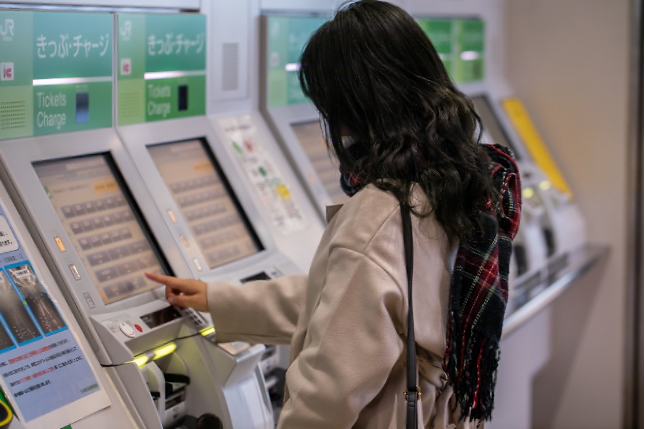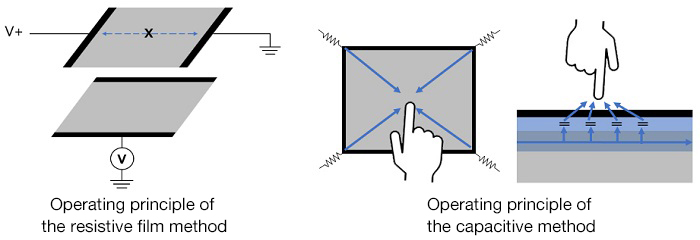There are many situations in daily life where touch panels are used, such as ticket vending machines, vending machines, and fuel dispensers at gas stations. Touch panels are also used in ATMs, POS systems (self-checkout), medical equipment, and meal-serving robots.
Even though they are mainly used indoors, they are sometimes used in places exposed to sunlight, such as near entrances and windows. Depending on the time of day, sunlight may or may not shine on them, and the surroundings may be bright or dark, so the lighting environment at the installation site can change significantly.

There are several types of methods for detecting the touching of a screen with a finger, including the “ultrasonic surface acoustic wave method,” “resistive film method,” “infrared scanning method,” and “projected capacitive method.” The appropriate type (method) of touch panel is chosen based on various factors such as the installation environment, operating conditions, size, and price.
In the infrared scanning method, the infrared light-emitting and light-receiving components are arranged in pairs along the edge of the screen. Sunlight hitting this area can cause the device to malfunction or fail to operate properly, as the system may not recognize that the infrared beam is being blocked by a finger during operation.
There are also many touch panels that are not affected by light (infrared rays). These include the capacitive method, which detects changes in surface electric potential when touched with a finger, and the resistive film method, which detects the location where the current between two films changes when pressed. Most smartphones use the capacitive method.

If the control methods are different, the methods of performance evaluation will also differ.
For infrared scanning type touch panels, it is necessary to evaluate operability when sunlight hits the infrared sensor’s light-receiving part.
For other types of touch panels, it is necessary to confirm that the temperature rise caused by sunlight does not result in a change in the panel surface’s impedance (i.e., a change in the amount of current flowing when touched).
And, for all touch panels, evaluating visibility when exposed to sunlight is essential. Each touch panel is protected by glass, film, or other suitable materials, and if the surface reflectance is high, it becomes difficult to see the screen when stray light hits it.
The evaluation of the viewing angle characteristics when sunlight hits the touch panel is also an important test, as it greatly affects product quality and, ultimately, brand strength.
Super spotlight type artificial solar lighting XG-500EFSS is optimal for tests that require infrared rays, such as those for infrared sensors and heat resistance. It features the ability to illuminate at an intensity of 1,000 W/m², equivalent to direct sunlight. It can also emit visible light at an intensity equivalent to that of the sun, so it can be used not only for heat-related tests but also for evaluating visibility. It has been adopted not only by touch panel manufacturers but also by many manufacturers of sensors, cameras, and electronics, and has a proven track record of numerous deliveries.
For manufacturers who do not require infrared rays, the super spotlight type XG-500AFSS, which is without infrared rays, is recommended. This model has also been adopted by many display manufacturers. The following three advantages that are characteristic of artificial solar lighting make this unit a popular choice among customers.
1. It has spectral characteristics that are extremely close to those of natural sunlight.
2. There is very little change over time.
3. There is no flicker since it uses DC lighting.

Please refer to the pages below for specifications and performance.
If you are considering evaluating the performance of touch panels under various lighting conditions or quantitatively assessing their visibility, please feel free to consult with SERIC, who has extensive experience.
・ Artificial concentrating-type solar lighting (super spotlight type) capable of producing 1 sun (1,000 W/m2) or 100,000 Lx
・ Artificial Solar Lighting XELIOS-500W Series